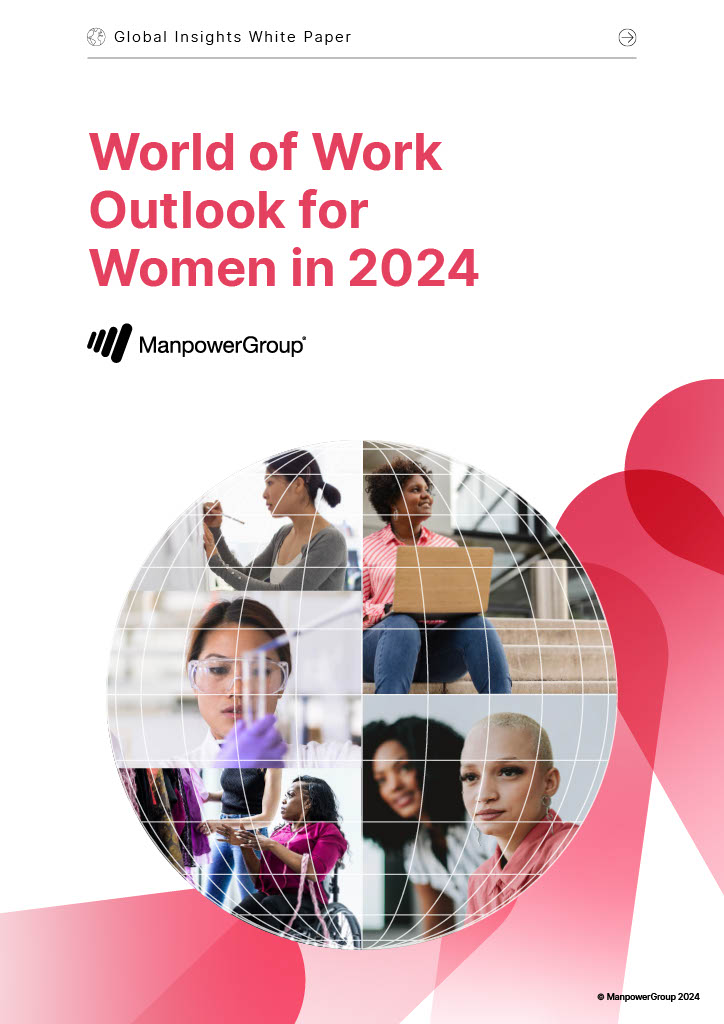Global business today continues to operate in a state of flux. As a major player, Japan — which was overtaken by China as the world’s second-largest economy (after the United States) in 2011 – is no exception. Its business culture, like those in the global community as a whole, is simultaneously evolving and holding firm to centuries-old practices, including consensus building over top-down decision-making, patience over impulse, and long term relationship-building over ad hoc deal-making.
Even against a backdrop of mild recession and political recalibrations, opportunities in Japan still exist for Western companies. Chief among the internal realignments was Shinzo Abe’s landslide re-election as prime minister in December, after serving less than a year as Japan’s leader in 2006 and 2007, and three years after his Liberal Democratic Party (Japan’s conservative party) was voted out of office in 2009.
Taking advantage of opportunities in Japan and with Japanese businesses abroad requires deftness, patience, and cultural sensitivity – the same elements typically involved in succeeding in any market not native to one’s own business.
Japan’s Contracting Economy
In a nutshell, it’s doubtful Japan will ever return to second-largest economy in world status. Most predictions foretell China reaching the top spot within a generation or so. Moreover, India, South Korea, Southeast Asia, and other areas now compete with Japan as their economies grow and consumer classes expand. Many of Japan’s aging corporate leaders seem stunned by a world in which “Japan Inc.” isn’t in ascendancy, which often translates into decision-making paralysis. This, in turn, causes formerly-venerated Japanese business behemoths such as Sony, Panasonic, and Sanyo being caught flat-footed by their foreign competitors in terms of innovation, market savvy, and global vision.
With one of the world’s most rapidly aging populations, Japan has witnessed the steady dismantling of the three- and even four-generation family living under one roof. Over the past generation, a more modernized, mobile society brought with it a declining birth rate and growing inability of younger family members to accommodate their elders’ daily care and medical needs.
This contrasts sharply with India’s and Southeast Asia’s younger population.
Further, continuing general tensions and long-standing territorial disputes between Japan and China, Taiwan, and South Korea have created disruptions in trade and manufacturing relations. Last September, protests, some violent, occurred at Japanese plants and offices in China over Japan’s refusal to “return” the uninhabited Senkaku Islands to China after more than 115 years of Japanese control. It caused companies such as Toyota and Honda to suspend production, and in the aftermath compelled Japanese businesses in China to rethink how or if they can continue under such volatile conditions. Understanding the nonsustainability of the situation, Abe, even before being sworn in as prime minister, announced that he would send envoys to China and South Korea to reduce tensions and mend fences.
Finally, there was the March 2011 tsunami, which devastated much of Japan’s northeast coastline, took over 18,000 lives, and precipitated the meltdown of the Fukushima Daiichi nuclear reactor. The socioeconomic disruptions caused had not been seen in Japan since the last months of the World War II. Between the high death toll, scale of destruction (imagine all buildings and roads a half-mile to one or more miles inland from San Diego up the California Coast through Santa Monica being destroyed or heavily damaged), and poor government response, Japan faced challenges unknown by many industrialized nations. And as an added factor, virtually unprecedented flooding in Thailand also hit Japanese facilities hard. In October 2011, Reuters reported that Setsuo Iuchi, president of the Thailand arm of the Japan External Trade Organization, confirmed that production was halted or disrupted in over 300 Japanese plants there.
Positive Factors Still Abound
But in the midst of Japan’s economic turmoil, an argument can be made that the American company that ignores it as a market or partner sells both Japan and its own potential returns short. The facts are compelling. For a decade, the yen has strengthened against the U.S. dollar; American-made products are relatively cheap to buy in Japan. Abe’s efforts to weaken the yen will bring only marginal relief to Japanese exporters. An exchange rate favorable to U.S. manufacturers seeking Japanese markets will remain in place for the foreseeable future. If, on the other hand, the yen does weaken significantly, notes Ken Hokugo, an independent business consultant with Tokyo-based United Partners and former Sumitomo Mitsui Banking executive, “Foreign businesses will have more opportunity to seek and buy Japan-based SMEs with craftsmanship, innovation, and technologies which cannot be easily mimicked. There are tons of such companies, but they are neglected and on the verge of extinction. If Japan can’t help itself, foreign capital can acquire and utilize ‘Made in Japan’ quality.
U.S. Annual Exports to Japan (in Billions USD)
| Year | Exports |
|---|---|
| 2003 | $52.0 |
| 2004 | $53.6 |
| 2005 | $54.7 |
| 2006 | $58.5 |
| 2007 | $61.2 |
| 2008 | $65.1 |
| 2009 | $51.1 |
| 2010 | $60.5 |
| 2011 | $65.7 |
| Jan-Oct 2012 | $58.4 |
Second, Japan remains the United States’ fourth largest trading partner, behind Canada, China, and Mexico. From January through October 2012, almost $58.4 billion worth of goods were exported from the U.S. to Japan, largely American-made medical devices, scientific supplies, pharmaceuticals, sports/fitness equipment, and machinery.
Notwithstanding its recession, Japan’s unemployment rate is 3.8%, a number that would be considered close to full employment in the U.S. The number has largely held steady for the past two years.
Buying and selling also continues. In 2011, Japanese companies spent a record $88 billion on mergers and acquisitions and, if Japan telecom giant Softbank’s $20.1 billion purchase of 70% of Sprint (announced last October) goes through, the deal will put Japan on course for another record-breaking year. On the other side of the ledger, cash-poor Panasonic, Sharp, and Sony will sell off approximately $3 billion in assets, including office buildings and stadiums, which presents investment opportunities for global investors.
Internally, Abe has pledged to increase public works and construction spending to the tune of $116 billion, which has been very well-received. On the Monday following his election, Tokyo Electric Power Co.’s (TEPCO’s) stock rose almost 33%. Ostensibly, the infrastructure repair and development program will focus on Northeast Japan, where the tsunami destroyed roads, rail lines, and ports. Whether this will actually translate into the 600,000 new jobs the LDP hopes it will create remains to be seen. Abe also plans to reduce corporate taxes and push the Bank of Japan to loosen its monetary policies.
A Nation Poised For Change
Where do businesses that don’t entertain billion-dollar transactions in Japan begin? Relationship-building and market research are probably the best starting points. Over the years many U.S. companies have taken take two extreme paths regarding Japan: fearing the commitment to the point of passing up opportunities, or jumping into it with naive zeal.
Mitsuhiro Kawai, a strategic marketing consultant at MKJ Inc. in Tokyo, cites two common mistakes made by foreign companies: The refusal to adopt a “when in Rome” attitude when seeking to bring a product to market in Japan, and embracing unrealistic expectations. In one case, Kawai recalls a major Philippines-based software firm that refused to hire one of its countrymen who had lived in Japan and spoke and read passable Japanese. Instead, it insisted on documents being translated into English by its prospective Japanese partners, rather than using its own translator. The firm’s attitude ultimately doomed its chances of success, despite interest in its product line on the Japan side.
In another situation, Kawai tells of a European vodka maker that insisted on initial orders of 10,000 units or more. Instead of building up to that level and potentially growing beyond original goals, as well as developing long-term relationships with Japanese distributors, the company attempted to impose its best-case scenario on the market. The venture failed.
Patience and a willingness to change one’s product to fit the Japanese market are necessary to maximizing the likelihood of success. For several decades, Columbus, Georgia-based Aflac, the insurance company with the well-known duck mascot, has enjoyed stunning growth and success in Japan. As of December 2011–the most recent available figures–it provided insurance to almost one out of every four Japanese households, with 32,749,000 policies and riders in place. Kenneth S. Janke Jr., Aflac executive vice president and deputy chief financial officer, says, “American companies conducting business in Japan should adapt to the local market. While our products have some nuances, we never try to reinvent the wheel. We took products that were successful in the U.S. and adapted them in ways that best suited the needs of the Japanese consumer. To this day, our policies in Japan address the same types of risk as our U.S. products, but in a culturally sensitive way. In terms of distribution, we learned that you have to recognize the business culture and fundamentally fit your model into the Japanese way of doing business, rather than try to take a one-size-fits-all approach.”
Understanding the “Japanese way” takes some time. Numerous consulting companies offer seminars on doing business there, and they’re not without merit. While there’s no substitute for actual experience, there’s definite value in learning various pro forma customs and protocol, including removing one’s shoes when others do; understanding that the typical “Western” voice carries loudly; paying attention and deference to who’s really in charge of a meeting; avoiding idioms, even among English speakers, who may not know what “no-brainer,” “loose cannon,” or “let’s not lose our heads” means; giving and accepting gifts with two hands; bringing along plenty of businesses cards (meishi) with English and Japanese on either side; respecting the consensus-building nature of Japanese decision-making; resisting the temptation to fill in gaps of silence that often occur during meetings; and so on. In short, It cannot be emphasized enough that the company considering branching into Japan must commit to a learning curve longer than that a native New Yorker would need to adopt in order to bring off a deal in, say, Portland, Oregon or Savannah, Georgia.
In the final analysis, Japanese businesses continue to refine, re-set, and re-design its place in the world as inside and outside influences change. New construction projects, a freer flow of capitol, and a growing hunger in Japan to not be relegated to the world’s economic sidelines should create opportunities for U.S. companies. For American businesses that bring both a long-term vision and a willingness to learn by doing, and who can apply common sense and imagination, embrace diligence, and — as Japan must increasingly do — welcome adaptability, Japan’s challenges can be offset by significant rewards.








